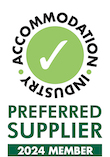Sanitising Public Places Properly in the Wake of COVID-19
Since the WHO (World Health Organization) declared the outbreak of COVID-19 in China’s Hubei Province, there has been a need for public facilities to implement ways of battling the spread of the virus.
Although the coronavirus is usually known to spread through respiratory droplets, such as saliva and mucus, there is proof that transmission may occur through contact with infected surfaces.
It is crucial to prevent the virus from reaching these surfaces thorough cleaning and sanitizing.
Encourage your patrons and employees to cover their sneezes and coughs with a tissue to reduce the amount of contamination on surfaces.
 Photo by: https://commons.wikimedia.org
Photo by: https://commons.wikimedia.org
Use soap and water to clean surfaces and dry them using paper towels to minimize the spread of COVID-19.
Read on to learn how to sanitize recreational facilities and commercial structures.
The Difference Between Cleaning and Sanitizing
 Image by: Steve Buissinne from Pixabay
Image by: Steve Buissinne from Pixabay
Cleaning and sanitizing are different cleansing tasks. Cleaning involves wiping and organizing surfaces like tables and countertops to look neat and clean.
Cleaning products lift and eradicate visible spots, stains, smudges, dirt and organic material from surfaces. The objective of cleaning revolves around the appearance and feel. You should routinely clean high traffic areas with warm soapy water.
Cleaning methods include vacuuming, scraping, rinsing, dusting and mopping.
Vacuuming is ideal for cleaning furniture, carpets and floors.
Scraping is excellent for removing food particles, grease and debris. After freeing surfaces of dirt particles, you should rinse them using hot or lukewarm water.
Dusting involves using a microfiber or dampened cloth to remove surface dust from various areas. Use a detergent when mopping for efficient cleaning.
Sanitizing is performed after cleaning. This is a procedure that removes bacteria and germs from surfaces. Unclean surfaces will decrease the efficiency of sanitizing.
Sanitizing reduces the level of bacteria by destroying any virus that may lead to illness. Sanitization is necessary for public places such as caravan parks to eliminate bacteria and viruses that lead to health complications.
 Image by: Gerd Altmann from Pixabay
Image by: Gerd Altmann from Pixabay
Sanitizing methods include steaming, heating and chemical sanitizing.
Heat is used in the food industry to eliminate bacteria. Steaming surfaces will also destroy disease-causing bacteria with high temperatures.
Chemical sanitizing involves using chemicals like quaternary ammonium, iodine and chlorine to kill viruses and bacteria. Ensure you use the right amount of sanitizer when sanitizing surfaces.
 Image by: Mohamed Hassan from Pixabay
Image by: Mohamed Hassan from Pixabay
How to Sanitize Public Spaces to Curb Virus Spread
Remove Dirt Using Soap And Water
Sanitation efficiency improves with adequate cleaning. Use a microfiber cloth to dust surfaces such as handrails and furniture. Use soap and water to mop surfaces. Start from the farthest corners of your facility as you move towards the entrance. Scrub tables, floors, walls and countertops to remove viruses and bacteria.
 Photo by: Tedward Quinn on Unsplash
Photo by: Tedward Quinn on Unsplash
Dry Steaming
Dry steaming removes residue and sanitizes surfaces using water vapour. The hot-pressurized water liquefies accumulated deposits, thus enabling their removal.
 Image source: www.kaercher.com
Image source: www.kaercher.com
Avoid steaming surfaces such as food plants, porous areas like brick and stucco and delicate items like silks, velour upholstery and thin plastics. They might not be able to handle the heat.
Encourage Regular Hand-Washing
 Image by: Myriam Zilles from Pixabay
Image by: Myriam Zilles from Pixabay
Post-hand-washing notices at every sink to promote proper hand-washing culture. This will reduce the amount of contamination on germ-friendly surfaces.
Ensure you also set up hand washing stations complete with soap, hand sanitizers, running water and paper towels. These should be placed at convenient spots around your caravan park.
Specific Germ Hotspots to Concentrate on While Sanitizing
ATM Buttons
 Image by: Michal Jarmoluk from Pixabay
Image by: Michal Jarmoluk from Pixabay
Imagine the damage potential they have during a pandemic such as the COVID-19 outbreak.
Most people, including those infected with COVID-19, use automated vending machines, Interac devices and cash machines. Thus, physical contact with these machines may spread the coronavirus and other viral infections.
Computer Keyboards
 Image by: Alexandr Borecký from Pixabay
Image by: Alexandr Borecký from Pixabay
This implies that dangerous bacteria such as coliforms, E.coli, pneumonia, salmonella, norovirus, coronavirus and MRSA are at your staff's or customers' fingertips.
Your computer keyboard is the centre of focus in a modern office. You use keyboards for sending emails, report typing, inputting data, writing code and so on. You may also sneeze or cough onto your computer without realizing. This makes it a high-risk avenue for bacteria and germs.
Escalator Rails
 Photo by: Mohannad Marashdeh from Pexels
Photo by: Mohannad Marashdeh from Pexels
Escalator rails harbour food, urine, mucus, faeces, E.coli and blood. Coronavirus spreads easily through saliva and mucus, and contact with these substances will cause adverse health effects.
Lavatory Sinks
 Image by: Michal Jarmoluk from Pixabay
Image by: Michal Jarmoluk from Pixabay
The filthiest part of a toilet is the sink, according to the BioCote bacteria testing unit. Bacteria and viruses fester on handles and faucets since people touch these surfaces after handling their business in the loo.
The sink surface is moist, allowing prolonged survival of viruses and bacteria. Soap dispensers are also breeding grounds for disease-causing microorganisms.
Mistakes to Avoid When Cleaning and Sanitizing
Using Chemical Cleaners on Stone Tops
 Photo by: Mick Haupt from Unsplash
Photo by: Mick Haupt from Unsplash
Stone tops are natural surfaces that rarely take on marks or stains. However, refrain from using chemical cleaners on these counters.
When you scrub stone tops, using chemical products like ammonia, bleach or vinegar to sanitize them might cause corrosion. You can instead use soapy water and be gentle on the scrubbing.
Using Chemical Cleaners on Stainless Steel Surfaces
 Image from: https://learn.compactappliance.com/
Image from: https://learn.compactappliance.com/
Chemical sanitizers like bleach will corrode metal surfaces such as stainless steel. Clean the surface using warm soapy water then dry it later.
Not Following Product Instructions
 Image source: Kansas State University
Image source: Kansas State University
Follow label guidelines when using a disinfectant and train your employees on how to use various cleaning products.
Ignoring labels leads to missing crucial points, which could have dire repercussions.
Help Stem the Spread of Disease
Identify the germ hotspots in your caravan park like doorknobs, faucets, countertops, toilet flush handles, microwave handles, control panels and computer keyboards. Take the necessary steps outlined above to disinfect these surfaces.
Encourage guests and employees to practise good hand hygiene using signs and posters. Provide enough conveniently located and well-stocked hand wash sinks around your caravan park. This will minimize the spread of pathogens.
Employee training on hygiene standards will also go a long way in curbing the spread of disease at your caravan park.
Source: DFID - UK Department















